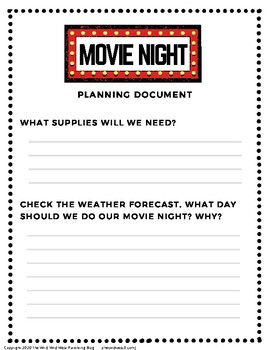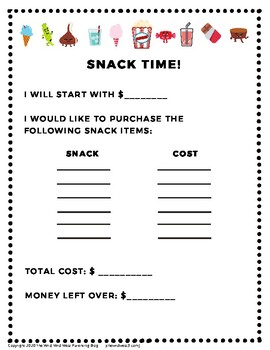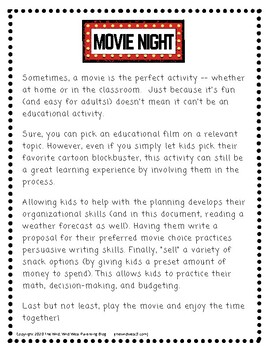Movie Night Educational Activities & Planning Packet for Elementary Students
- PDF
Description
Sometimes a movie is the perfect activity -- whether at home or in the classroom. Just because it's fun (and easy for adults!) doesn't mean it can't be an educational activity.
Whether you're choosing an educational film on a relevant topic or just a popular cartoon blockbuster, using this planning packet allows you to ensure educational objectives are met. The attached packet provides students an opportunity to plan and develop organizational skills, read and apply a weather forecast, and practice their persuasive writing skills in a brief essay lobbying for their preferred movie choice.
Finally, teachers or parents can "sell" a variety of snack options by giving kids a preset amount of money to spend. By using the final page of the packet, kids can practice their math, decision-making, and budgeting
This packet is also great for homeschooling parents or parents who just want to inject a little additional learning into Family Movie Night.





